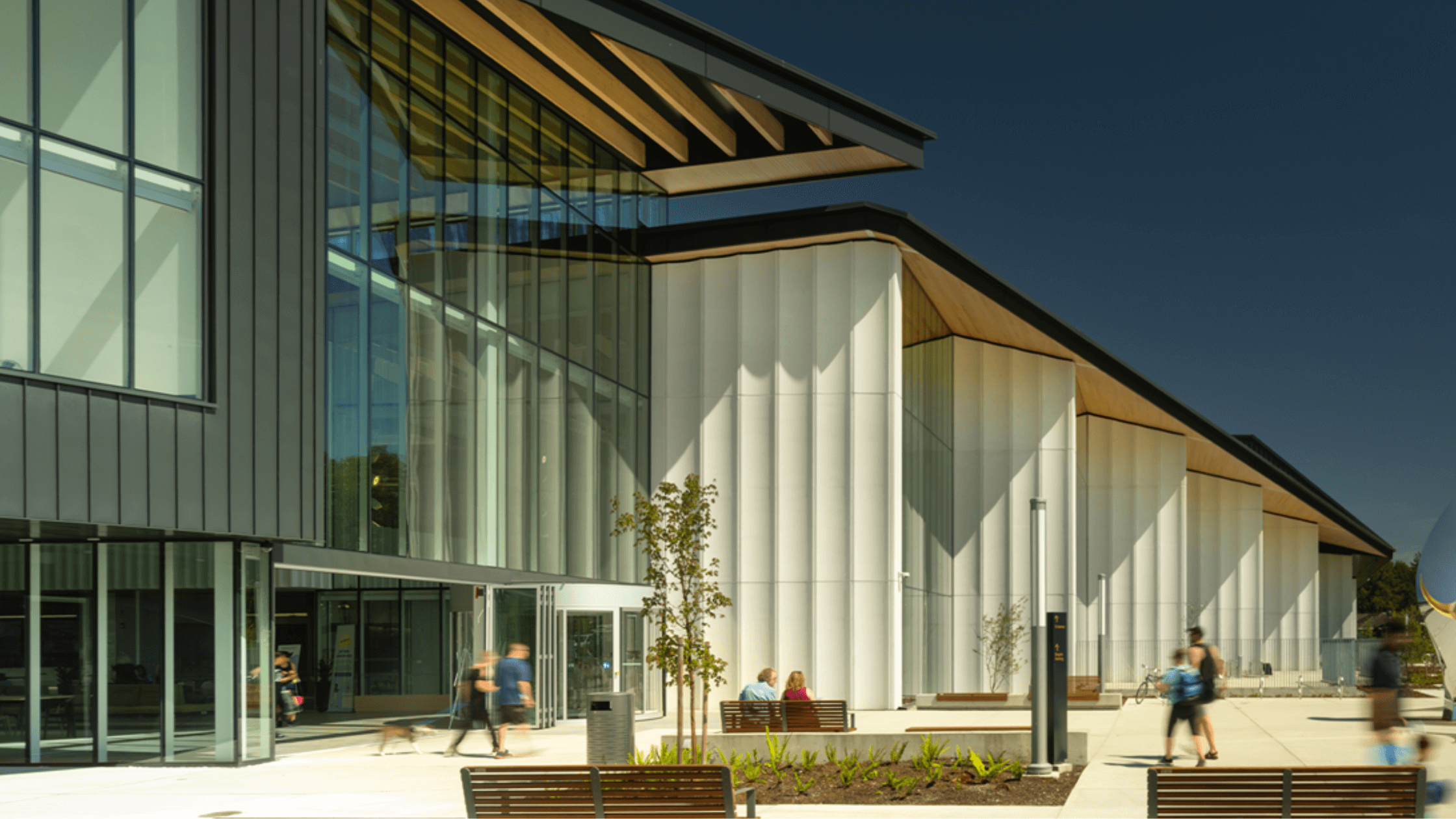Canada’s first zero-carbon aquatic centre is a groundbreaking step forward in sustainable design, blending environmental innovation with community wellness. Located in New Westminster, British Columbia, the cutting-edge təməsew̓txʷ Aquatic and Community centre, designed by HCMA, minimizes carbon emissions while providing residents with a state-of-the-art space for recreation and health.
The təməsew̓txʷ (Sea Otter House) Aquatic and Community centre is seamlessly integrated into its natural surroundings and features an iconic, unifying roof. Created by HCMA Architecture + Design, the centre is built to accommodate individuals of all ages and abilities, offering spaces that reflect the evolving ways communities engage in recreation. Its design prioritizes fostering social connections and wellness-focused activities alongside traditional sports and fitness programs.
With a construction cost of CAD 114 million and spanning 10,684 square meters, this combined aquatic and community centre is the first in Canada to meet the Canada Green Building Council’s Zero Carbon Building-Design Standard while being fully electric.
This pioneering aquatic centre achieves zero-carbon status through innovative energy systems, including solar panels, efficient heat recovery, and passive design strategies that reduce energy consumption. It’s more than a pool—it’s a blueprint for how public spaces can meet the challenges of climate change. This marks a significant achievement for a building type that has historically been a major source of greenhouse gas emissions for municipalities. Additionally, the facility is a pioneer in using a gravity-fed filtration system, which significantly reduces chlorine dependency and minimizes the creation of harmful byproducts, enhancing air and water quality.
Inside, the facility offers various amenities catering to all age groups and abilities. From accessible pools and fitness spaces to multipurpose community rooms, the design ensures inclusivity while fostering social connections. Beyond its environmental impact, the aquatic centre exemplifies how infrastructure can unite people while prioritizing the planet.
As the first of its kind in Canada, this zero-carbon aquatic centre is setting a precedent for municipalities nationwide. It serves as both a recreational hub and an inspiration for sustainable public building projects, paving the way for a greener future.
Want more industry trends? Subscribe to our weekly newsletter!



